The Schefflera or Umbrella Plant
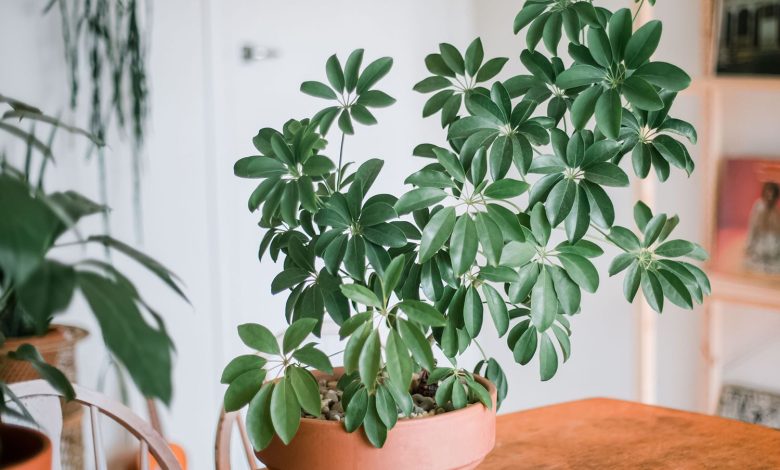
The Schefflera plant is a member of the Aralia family. It is native to the South Pacific, but has been cultivated in many other tropical and subtropical regions for its beautiful foliage. It is known in many areas of Latin America as an umbrella plant.
It is a fast -growing evergreen shrub that can grow up to 150 centimeters tall indoors and over a meter outdoors.
The leaves of this large plant are bright green on top, while the underside of the leaves are light green with white streaks. They have an oval shape with pointed tips.
The flowers are small and white in color, but can be seen from afar because they bloom profusely all at once during the season.
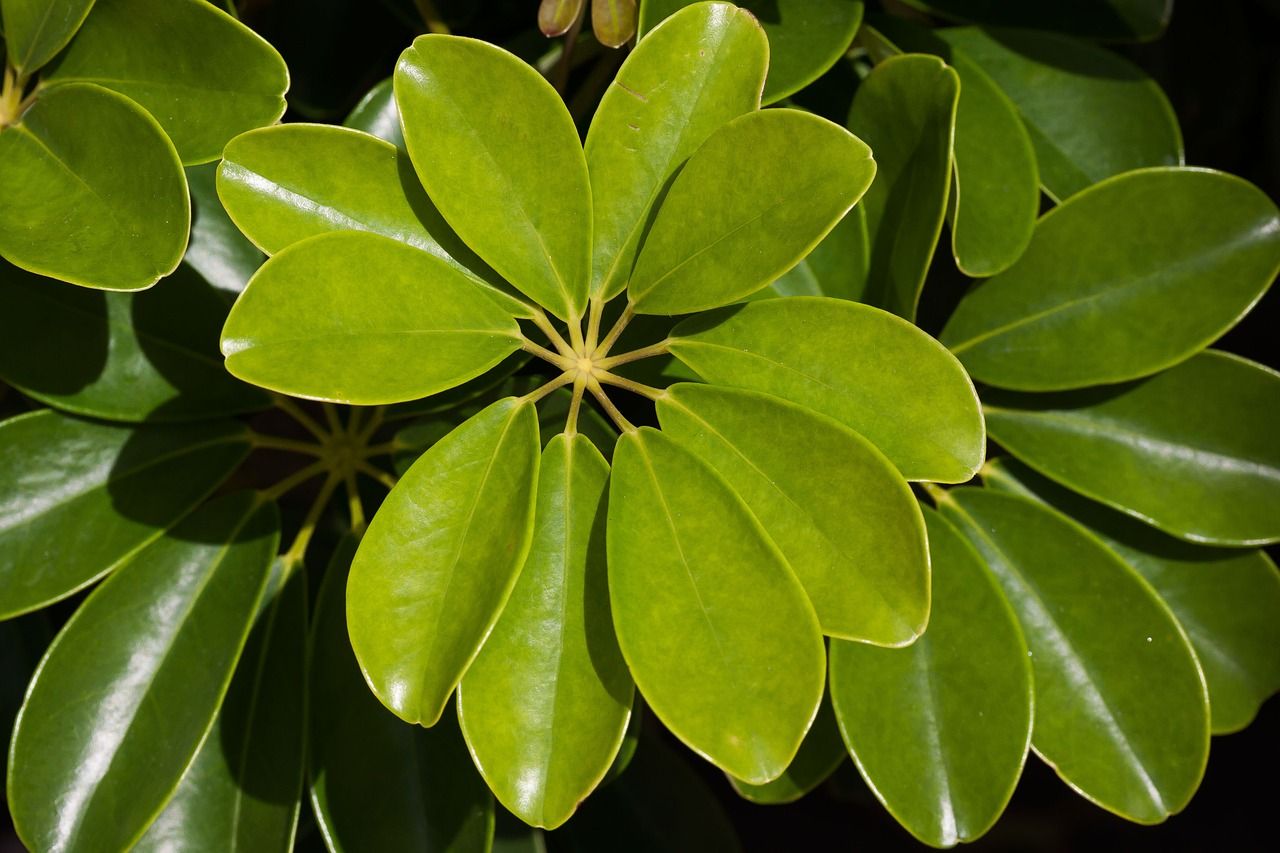
Characteristics of this plant
- Common name: Schefflera, umbrella plant, umbrella tree.
- Botanical name: Schefflera spp.
- Family: Araliaceae.
- Plant Type: Evergreen broadleaf shrub or small tree.
- Size: 90 and 180 centimeters wide (indoors); More than a meter high ( outdoors).
- Sun Exposure: Bright, indirect light.
- Soil Type: Rich and moderately moist.
- Soil pH: Slightly acidic (6.0-6.5).
- Flowering time: Summer (outdoors).
- Flower color: White, pink or red (indoor plants rarely bloom).
- Native Area: Australia, South Asia.
- Toxicity: Slightly toxic to humans, toxic to pets.
Schefflera belongs to a large genus of tropical plants that includes two species that make excellent houseplants.
The larger Schefflera actinophylla (sometimes called umbrella plant or umbrella tree) has long, glossy, oval green leaves that droop gracefully from a central stem, resembling an umbrella.
A mature Schefflera may have 12 to 16 leaflets on a single stem, while an immature Schefflera typically has four to six.
Schefflera arboricola (sometimes called dwarf Schefflera) has smaller, glossy leaves, sometimes with creamy variegation . Apart from its smaller size, its appearance is very similar to that of its taller cousin.
The flowers are small and white in color, but can be seen from afar because they bloom profusely all at once during the season. Planting them at home is a great green idea for the home.
Scheffleras are typically grown indoors for most of the year in cooler climates, but can be brought outside in the warmer months where they will thrive alongside other tropical plants. However, Schefflera plants often need to be grown outdoors to put on their show of long, tentacle-shaped red, white or pink flowers.
Schefflera are fast growing plants, especially when planted outdoors where they can grow a meter a year. Indoor plants are slower growing, especially if you keep them somewhat confined in a small pot.
If you are planting a Schefflera in a garden with a warm climate, it is best to plant it in the spring or fall, when the weather is not too hot.
Caution!: All parts of the Schefflera are slightly toxic to humans and very toxic to pets.
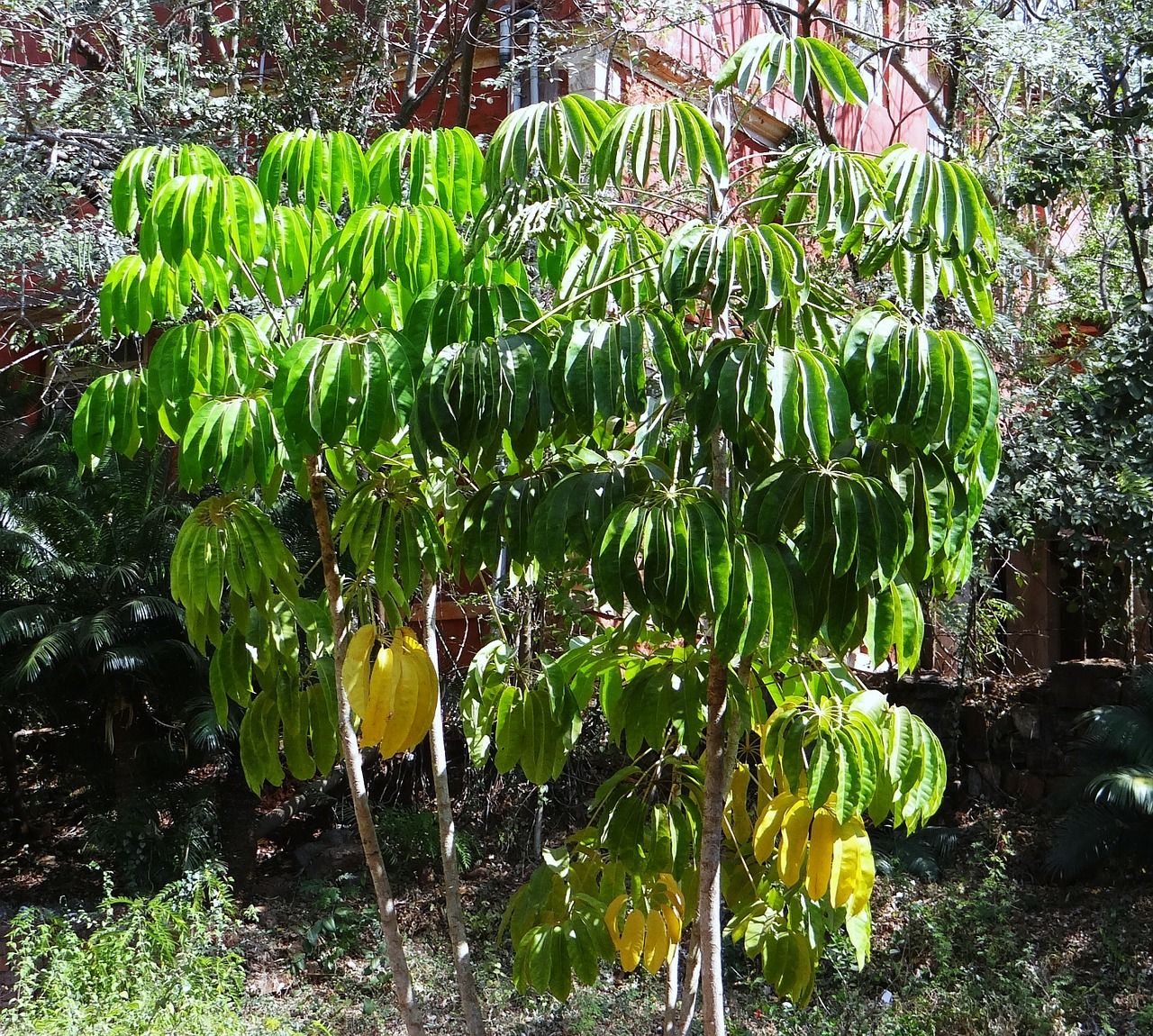
Light: Where do I plant it?
The Schefflera prefers bright, indirect light.
In summer, move the plants to an outside pot, where they get bright light but not direct sun, such as a covered patio.
A Schefflera plant that is going limp or with drooping flowers may not be getting enough light. Never place a Schefflera in full direct light because intense sun can burn the leaves.
Soil: How do I prepare the soil?
Plant Schefflera using a rich, loose substrate with moist compost.
Ideally, a sandy loam soil that drains well and has a slightly acidic pH. Avoid planting in an outdoor location where the soil gets too wet or waterlogged.
Water: how often and how?
Water weekly during the growing season and mist the leaves often.
You can wait for the potting soil to dry out and then thoroughly soak the soil when you water.
Reduce watering during winter. Schefflera is often overwatered, causing it to die.
How can I know if I am watering it too much? Yellow, drooping leaves are a sign that you are overwatering.
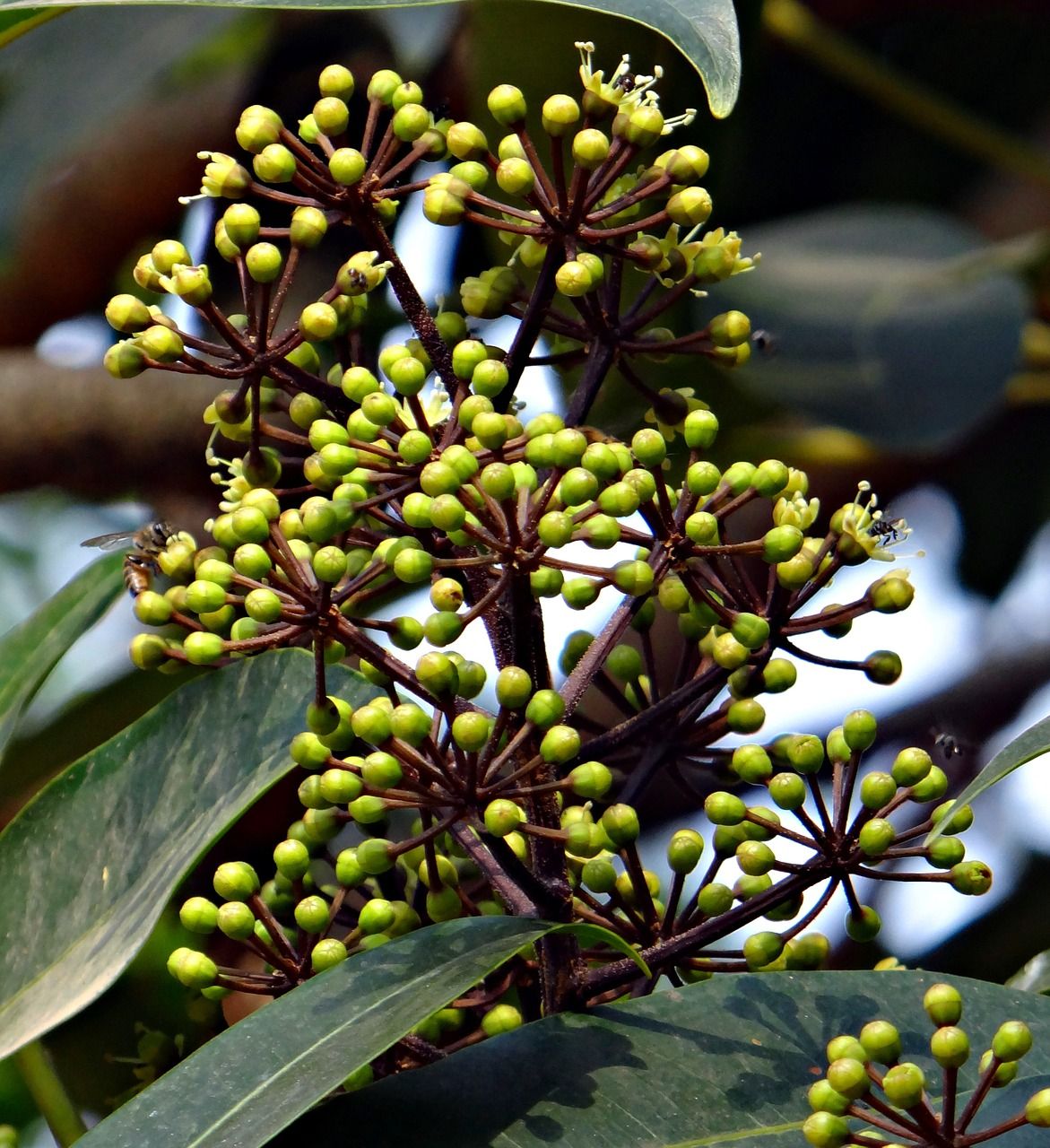
temperature and humidity
Being a tropical plant, the Schefflera requires fairly high humidity and tropical temperatures; will suffer with temperatures below 15ºC.
Do not expose these plants to drafts or heating vents.
An under-watered or cold Schefflera will start to drop leaves quickly, so keep an eye on the condition of its leaves and correct the problem if it occurs. If the plant loses all of its leaves, you can try to save it by moving it outside in the spring and watering it almost every day.
Planting Schefflera
Scheffleras are beautiful plants that can be used for many different purposes. They are easy to grow and maintain, making them a great choice for beginners.
To plant a Schefflera, find a potting mix with homemade organic matter such as moist compost.
If you are outside you will need to place it in an area where the soil is well draining and not too wet, as this plant will rot if exposed to standing water. Do not plant it outside where it will be exposed to heavy rain or receive direct sun.
Schefflera Care
A Scheffleras plant is not at all difficult to maintain if it receives a lot of indirect light, heat and humidity. In very cold climates it may be necessary to add a heating device for the lower part of the plant.
- You will have to water it weekly during the growing season, but mist the leaves of our plant daily with a spray. Wait until the soil in our pot is dry before soaking it again.
- Reduce the amount of water you receive during the winter. In summer if temperatures exceed 22°C it is recommended to water it daily.
- But be careful, spraying this plant too much will cause it to die, you will notice that it is receiving too much water when you see its leaves yellowing or very drooping. Worse still if the leaves detach from the stem.
- It is recommended to fertilize your Schefflera with liquid manure or compost tea every two weeks during the growing season. Plants need their nutrients to grow and this is no exception, Schlefflera plants will benefit like no other plant from the extra nutrients you give them.
- Summer temperature should not exceed 26-28°C and winter temperature should not drop below 11°C. Although this plant does not like cold air and does not like dry air, it is important to ensure that they have plenty of fresh air by opening windows frequently and using fans.
- It would be ideal for this plant to be in a large pot, which allows it to enter the house at night and take it to the patio during the day.
- The best substrate for Scheffleras is peat moss. Peat moss is an excellent soil amendment because it is acid neutral, making it a good pH buffer. It also has good water retention and will help the plant survive periods of drought.
Most Common Schlefflera Plant Pests
The most common pests that the Schefflera plant has are mealybugs and mites. These pests will suck the sap from the leaves of the Schefflera plant and cause them to turn yellow or brown.
Mealybugs are small, white, oval-shaped insects with tiny hairs on their bodies. They like to hide in crevices in Schefflera plant leaves where they feed on sap and lay eggs.
Instead, mites are tiny red spider-like insects.
To combat these pests you must buy a special product to eliminate it, or if you want you can also make your own insecticide.
For all gardening lovers, it is no mystery that garlic is a powerful repellent for all kinds of insects, very capable of driving them away. If you want to make this pesticide you will have to crush a head of garlic with the help of a blender along with about 20 cloves.
To this mixture we will add two glasses of water and let blend until the mixture is homogeneous. We will have to let this mixture rest for at least one day, although three are recommended.
After resting, we will add 2 liters of water and it will be ready to use with the help of a spray.
This pesticide is perfect for mites and mealybugs, which are the most common pests of Schlefflera.
Schefflera diseases
Schefflera diseases are caused by a variety of factors. The most common is excessive watering.
This will cause the roots to rot and the plant to wilt. It can also be caused by a fungus, bacteria, or virus that can lead to root rot and wilting.
The best way to combat these diseases is through aeration, reducing water and adding nutrients for recovery.
Pruning a Schefflera Plant
Regular pruning is good for your Schefflera plant especially if it receives low light, as it will help it consume less nutrients. Removing long branches will also help maintain a smaller, neater appearance for your plant.
Transfer of the pot of your Schefflera plant
It is important to repot Scheffleras plants periodically, about once a year.
If they have been grown out of pots or have run out of soil, the pot trap will need to be slowed down, otherwise they may not end up growing as much as they should. By extending the period between transplants, the plant may grow properly.
Make sure that the new pot always has large holes for drainage, since for this plant it is essential to remove excess water.
Types of Schlefflera
Of the many species in the genus Schefflera, two are common houseplants:
- Schefflera actinophylla: The most common Schefflera, it has oval leaves that grow up to 25 centimeters from a central stem. It can be a fairly large specimen at fifty feet outside, but potted indoor specimens often reach four feet.
- Schefflera arboricola: This smaller version, popular in home gardens, has 1- to 2-inch leaves that grow in tight clusters; it is a variegated variety of this plant, with creamy spots on its leaves. It can grow up to seven meters outside, but indoor plants do not usually exceed two meters. The most popular types are ‘Dazzle’, a variegated form with nearly white leaves; ‘Gold Capella’, a yellow and green variegated form; ‘Trinette’, a cream and white variegated plant; and ‘Dwarf’, which has dark green leaves and is only a meter tall.
How long do Scheffleras live?
Outdoor Scheffleras grown in the right hardiness zones can live for decades; indoor specimens can live 25 years or more.
Where should I place the Schefflera in my house?
A place with lots of indirect light and a temperature of 12ºC to 23ºC is the perfect place for this tropical beauty.
Are there plants similar to this one?
Yes.
The money tree (Pachira aquatica) looks similar to the Schefflera, especially if you find a braided variety that offers a bushier look. Native to Central and South America, the money tree is hardy in zones 10 to 12, but is often grown as a houseplant.
Scheffleras, can it be toxic for my pets?
Yes. You should be very careful with your pets if you have Schefflera in your home. Whether in the garden, or indoors.
Also, be careful if you have small children. It is less toxic to humans, but it is also harmful.

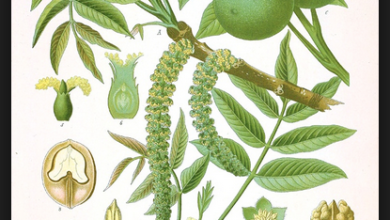
![Photo of How to Make Homemade Organic Compost: [Types and Forms]](https://www.complete-gardening.com/wp-content/uploads/2022/08/how-to-make-homemade-organic-compost-types-and-forms-390x220.jpg)
![Photo of Rosebush Cuttings in Potato: [Concept, Season, Rooting and Planting]](https://www.complete-gardening.com/wp-content/uploads/2022/08/rosebush-cuttings-in-potato-concept-season-rooting-and-planting-390x220.jpg)
![Photo of Cucumber Diseases: [Characteristics, Types, Detection and Treatment]](https://www.complete-gardening.com/wp-content/uploads/2022/08/cucumber-diseases-characteristics-types-detection-and-treatment-390x220.jpg)